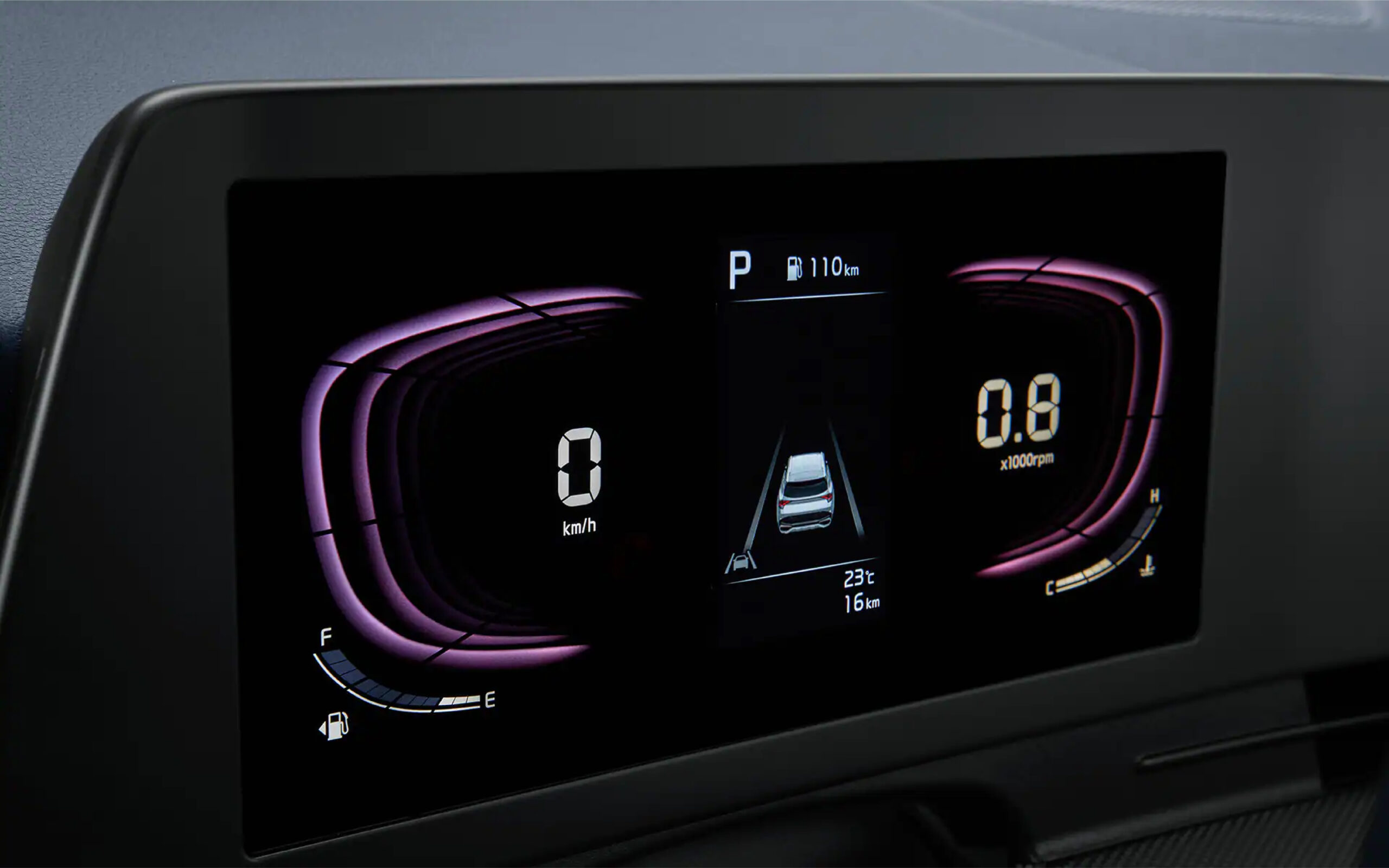Resource Type: Case Study
Altia Engineering Services Provides Durable Code Recipe for Multinational Oven Manufacturer

Altia Accelerates EV Transition for Renault Group, Delivering Design Vision for Mégane E-Tech Electric Driver Display

Altia Provides Major Surgical Device Maker with Turnkey Design, Saving Time and Resources

“This is what this product always wanted to look like!”
—Device Maker
For over 125 years, a division of one of the world’s largest medical products companies has been meeting the needs of surgical hospitals with innovative products. Today, assisted by the tools and services provided by Altia, it continues to lead the profession in the design and manufacture of medical devices that guide surgeons and their teams through highly complex procedures.
A Search for Solutions
Recently the manufacturer was designing an upgrade for one of its most successful camera-driven surgical visualization systems. Executing a new GUI (Graphic User Interface), however, was proving to be problematic due to the limitations of the design software recommended by a sister division. According to the senior principal software engineer on the project, the time crunch for development, combined with the difficulties using the recommended software, compelled him to try an alternative package – Altia GUI development software.
“We had licenses for Altia Design and Altia DeepScreen available to us through our company, so we gave it a try. It quickly became clear that it was superior to the software given to us by our sister division,” he said.
The device manufacturer was still constrained by engineering resources. “That’s when Altia asked, ‘How about if our services team steps in to help you meet your first design milestone?”
As Jeff Stewart, Altia’s Director of Field Application Engineering, recalled, there was a pause on the other end of the line.
“He said, ‘Really? You could just build it for me turnkey?’ I told him we could, and that’s where things went.”
Altia Earns Customer Trust
Stewart arranged a first meeting with Altia’s Professional Engineering Services Group. The customer explained that the existing monochrome GUI had been hand-coded internally and was becoming difficult to maintain. Any upgrade would have to run on the product’s existing Linux platform. Together, the two companies began working on how the new interface would function.
“From the beginning we had a good relationship,” noted Brett Stein, Vice President of Engineering Services. “The customer had its software lead, design lead and one of their senior software engineers on every call. We had our project and tech lead and probably several other engineers on each of those calls as well. When everyone collaborates on a regular basis, good things result.”
Once Altia met the first milestone, the customer recognized the value of collaborating with Altia’s team on this project – time-savings, expertise, overall quality of the interface and more. They asked Altia Services to complete the rest of the project. Backed by this team of UI experts, the customer realized they could deliver far beyond their initial plan. Therefore, they began to expand on what was initially intended to be only five screens to include fresh ideas and feature improvements not initially planned for the product.
“The final program involved nearly 50 screens in all,” Stein stated. “It included draggable, scrollable lists and menus. The GUI is designed to look and feel like a smartphone interface while running on a very low power platform. Our team is well-versed in this kind of work. In fact, this is what our company is known for in a variety of industries. So, while it was a challenge, the project progressed well.”
For any medical instrument, the UX has to be right. “The position of buttons and controls has to be intuitive,” continued Stein. “Operators can’t afford to make a wrong choice, especially with gloved fingers. The visual layout must also communicate instantly, so technicians are making the right choice every time.”
“The GUI is designed to look and feel like a smartphone interface while running on a very low power platform. Our team is well-versed in this kind of work. In fact, this is what our company is known for in a variety of industries. So, while it was a challenge, the project progressed well.”
Brett Stein, Vice President of Engineering Services
The manufacturer’s principal engineer recalled how Altia even advised on language support. “One of Altia’s services team is a native Chinese language speaker. She told us, ‘I believe some of your existing translations are wrong.’ It turned out she was correct, so we fixed them.” He continued, “That was really cool, as it’s not the norm to have that level of collaboration when we do business with other vendors.”
The trust and transparency Altia earned went a long way, in the engineer’s mind. “I have a very junior associate, straight out of college, working with me on the software. Because of the comfort level I felt with Altia, I was able to let him be the liaison with Altia’s services team. I would not have had that confidence if it were some other supplier I didn’t trust.”
On Budget, Ahead of Schedule
Despite the aggressive timeline, Altia was able to complete the revamp of the original monochrome GUI with an updated, full color and highly intuitive design. The end product was not only more advanced, but on budget and ahead of schedule. Furthermore, due to Altia’s ability to generate code for the device’s microprocessor target directly from the design using Altia DeepScreen, the GUI worked correctly the first time, without refinements.
“We showed how fast and efficient we could be. In the past the customer would outsource software and they would spend months reworking what they got back,” said Stewart. “What they got from us was a functional product.”
The customer noted that Altia allowed them to effectively extend their internal resources for this project. “Our engineering team has a lot on its plate. Altia gave us extra productivity without extra head count,” the principal engineer stated. “We were able to concentrate on the business logic while gaining a polished user experience.”
Altia’s Engineering Services Group enabled the customer to complete its GUI in half the time that its sister division was investing in a GUI for a similar product. Now, that sister division is interested in Altia as well.
“ Our engineering team has a lot on its plate. Altia gave us extra productivity without extra head count,” the principal engineer stated. “We were able to concentrate on the business logic while gaining a polished user experience.”
“I felt I was working with a team just down the hallway,” said the manufacturer’s senior principal software engineer. “This is the kind of relationship we look for. Our users are thrilled. With Altia’s help, this is what this product always wanted to look like.”
Hyundai Uses Altia Design Tools on New-Generation Kia Sportage

Easy-to-Use Altia HMI Design and Development Environment Gives Automaker Freedom to Innovate
The Customer
Hyundai Kia Motor Company, one of the world’s leading automotive OEMs, recently began using Altia Design, Altia’s HMI design/editing package, and DeepScreen, Altia’s code generator. Hyundai now uses the Altia platform to accelerate development of all its 4.2-inch instrument clusters, including the designs in its newest Kia mid-size SUV—the Kia Sportage.
Full Design Control
Ensuring the integrity of cluster design concepts is what drew Hyundai to Altia. With Altia Design, they can design, test and specify instrument cluster ideas within their own design studio. This enables the OEM to remove developmental steps with outside Tier One suppliers and shorten their design timelines. Moreover, Hyundai’s partners can use the Altia-generated code in their implementation. With Altia Design, Hyundai can maintain their design vision all the way to the final product.
Altia Design, Altia’s full-feature UI design, simulation and model integration environment, allows users to quickly build and iterate high-fidelity, functionally complete prototypes and GUIs. Users can describe animation, stimulus and behavior without programming; furthermore, they can import, create and control objects from third-party environments.
Once specified in Altia Design, Hyundai’s concepts go directly into DeepScreen, Altia’s code generator, to generate production-grade code that is deployable onto the selected hardware platform. The result is hardened software that a Tier One can directly use in a final production implementation.
Hyundai enjoys multiple benefits from Altia’s software. Because they own the implementation, the OEM has control over pricing. On the creative side, Hyundai’s instrumentation team likes the ability to do designs without relying on writing code.
“Automotive design professionals come from a mixture of disciplines. Some are more comfortable with the graphics side, which others are more software-focused,” commented Michael Hill, Altia Vice President of Engineering. “So, the ability for everyone to sit at the same table and use Altia Design to come up with a solution is incredibly valuable.”
The ability for everyone to sit at the same table and use Altia Design to come up with a solution is incredibly valuable.
- Michael Hill, Altia Vice President of Engineering
Testing Proves Altia Performance
Before committing to Altia’s platforms, Hyundai did a performance test on the products.
“We were tasked with showing we could run a certain graphics type on near-production hardware, and that we could deliver the same performance or better,” noted Hill. “Next we had to show that our generated code was of a certain size. Finally, we had to meet certain speed and footprint parameters.” Subsequent analysis showed that Altia DeepScreen, working in tandem with Altia Design, exceeded the performance requirements.
Efficiency for the Future
As OEMs know, design cycles for cluster components can be extensive. Altia Design and DeepScreen have significantly shortened Hyundai’s design-to-handoff cycle with their Tier One partners and, perhaps even more importantly, their ability to deploy innovative graphics in their instrument clusters on hardware requiring lower power consumption.
Hyundai is now able to define every aspect of their 4.2-inch cluster designs, from concept through bill of materials, on models such as the new Kia Sportage.
“Altia software has helped OEMs and Tier 1 suppliers all over the world to streamline their collaboration and development processes,” said Hill. “The ease-of-use and strong feature set available with Altia’s products have enabled companies like Hyundai and many more to define their vehicle HMI solutions more fully and implement those solutions dependably.”
Altia Saves Tier 1 Auto Supplier’s Climate Control HMI Program with Ultra-Low Power Code Solution

Ssangyong Uses Altia Software to Deploy Embedded Displays for Rexton SUV and Trucks

Easy-to-Use Altia HMI Design and Development Environment Gives OEM New Freedom to Innovate
The Customer
Global automotive companies understand how important vision is to vehicle design. It is a major challenge, in such a complex industry, to maintain a designer’s original vision through the hundreds of steps between concept and final product. Their success in overcoming these obstacles, in partnership with Altia, is a transformative step for them. Other OEMs across the automotive industry can benefit from following a similar path.
Full Design Control
Altia Design, Altia’s full-featured user interface design, simulation and model integration environment, allows users to quickly build and iterate high-fidelity, functionally complete prototypes and graphical user interfaces (GUI) models. Users can describe animation, stimulus and behavior without programming. Furthermore, they can import, create and control objects from third-party environments.
Once specified in Altia Design, Ssangyong’s concepts go directly into DeepScreen, Altia’s code generator, to automatically generate production-grade code that is deployable onto their selected hardware platform. The result is hardened software that a Tier One can directly use in a final production implementation.
Ssangyong enjoys multiple benefits from Altia’s software. Because they own the implementation, the OEM has control over pricing and the branded look and feel of their HMIs. On the creative side, Ssangyong’s instrumentation team likes the ability to design without relying on writing code.
Testing Proves Altia Performance
Before committing to Altia’s platforms, Ssangyong did a performance test on the products.
“We were tasked with showing we could run a specified graphics set on near-production hardware, and that we could deliver the same performance or better,” noted Michael Hill, Altia Vice President of Engineering. “Next we had to show that our generated code was of a certain size. Finally, we had to meet a series of speed and footprint parameters.” Subsequent analysis showed that Altia’s solution—Altia Design and DeepScreen—exceeded the customer’s performance requirements.
Efficiency for the Future
As OEMs know, design cycles for cluster components can be extensive. Altia Design and DeepScreen have significantly shortened Ssangyong’s design-to-handoff cycle with their Tier One partners. Perhaps even more importantly, Altia’s software has improved their capability to deploy innovative graphics in their instrument clusters on hardware requiring lower power consumption.
Top Automaker Takes Control of Their Cluster Designs Using Altia HMI Software

Easy-to-Use Altia HMI Design and Development Environment Gives OEM New Freedom to Innovate
Global automotive companies understand how important vision is to vehicle design. It is a major challenge, in such a complex industry, to maintain a designer’s original vision through the hundreds of steps between concept and final product. Their success in overcoming these obstacles, in partnership with Altia, is a transformative step for them. Other OEMs across the automotive industry can benefit from following a similar path.
Lost in Translation
Not long ago, a global automotive customer spoke with Altia about their experiences designing digital instrument clusters for the company’s vehicles. Their design staff explained their difficulties maintaining the integrity of their design ideas.
“Each Tier One cluster supplier has their own software package it uses for design implementation. Therefore, each project is one more new opportunity for a design to be muddied or for software bugs to be introduced,” explained Jeff Stewart, Altia Director of Global Sales Engineering. “The OEM’s designers
have no way to provide a prototype that is suitable for development. They cannot even test their designs in a production setting to determine their viability for a particular microprocessor target.”
Because this automaker works with multiple cluster makers, their team must face these kinds of issues repeatedly. “Every time a new cluster is begun, the OEM’s design team is facing a new set of implementation issues. They are continually reinventing the wheel,” he said.
Putting Design Control in OEM Hands
Having worked with countless engineers around the world, Altia had the answers for this OEM’s engineers in Altia Design, the company’s HMI design/editing package, and DeepScreen, Altia’s code generator.
“We demonstrated to the design team that with Altia Design, they can design, test and specify their instrument cluster ideas within their design studio before they ever approach the supplier. That way the Tier One can directly use the generated code in their implementation. With Altia Design, our OEM customers can retain direct control over their vision for the final product,” said Michael Hill, Altia Vice President of Engineering.
Yet Altia was able to go further. “We said, ‘Look, because you own the implementation, you have control over pricing because the software has been generated and tested internally. You can assure your Tier One that the design will run on hardware of a known cost,’” Hill continued. “Altia Design and DeepScreen give auto companies ownership over the entire construction process.”
At the time, the OEM was in the middle of conversations with one of their suppliers who had experience with a competing HMI software package. They decided to do a performance test on the two design environments.
“We were tasked with showing we could run a certain graphics type on near-production hardware, and that we could deliver the same performance or better,” Stewart noted. “Next we had to show that our generated code was of a certain size. Finally, we had to meet certain speed and footprint parameters.”
As subsequent analysis showed, Altia DeepScreen, working in tandem with Altia Design, exceeded the performance requirements of the Tier One platform.
Unified Design-to-Code
The automaker’s design team liked the ability to do designs in Altia Design without having to learn code, as was necessary with the competing design package.
“The people on the OEM’s design team come from a mixture of disciplines. Some are more comfortable with the graphics side, while others are more software focused, so the ability for everyone to sit at the same table and use Altia Design to come up with a solution was a big deal,” observed Stewart.
Once specified in Altia Design, the concept goes directly into DeepScreen to generate production-grade code that is deployable onto the final hardware as a finished product. The result is hardened software that a Tier One can directly use in an implementation.
“Once our head-to-head test was done, the OEM was convinced,” Hill stated. “They began specifying in their requests for proposals that Altia was the required design environment.”
Huge Time Savings
As automotive companies well know, the design cycle for cluster components can run to two years or more. This OEM’s experience with Altia Design and DeepScreen significantly changed the game. Once their Altia platforms were in place, the design team was able to shrink their design-to-handoff cycle to their Tier One to just three months.
“This was the first time that this particular automotive company was able to produce an HMI in-house,” said Stewart. “Prior to that, it was only producing documentation or requirements for their HMIs. With Altia, the teams were able to verify that the look-and-feel was exactly what they wanted before the concept ever went out the door.”
Through their use of Altia, this OEM can define every aspect of their cluster designs, from the concept through the bill of materials. Altia software helps to improve efficiency in the cluster development process. Altia’s ease-of-use and strong feature set enable OEMs to fully define vehicle HMI solutions implement those solutions dependably.
“For an OEM, nothing is more valuable than to maintain control of the design process,” Hill said. “With Altia, there are no more surprises.”
Altia Creates Design Efficiencies for Major Asian Auto OEM and Tier 1 Supplier, TYW

Technical capability, training strengths and code deployment efficiency are game-changers
Medallion Discovers Versatility, Cost Savings With Altia

Learn how Medallion leverages Altia to deliver rich, high performance graphics for marine, motorcycles, powersports, recreation, commercial and safety vehicles and more.
